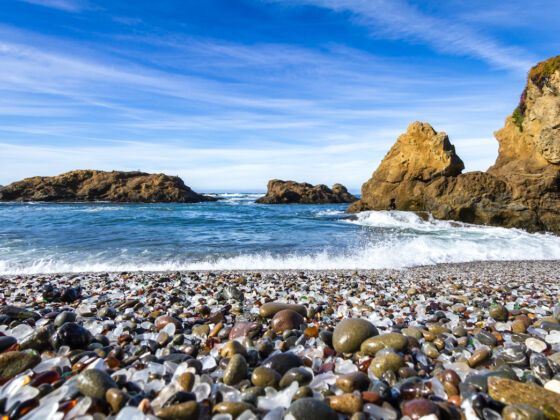THERE ARE PEOPLE IN THIS WORLD who litter like nobody’s business. Growing up in suburban Colorado and spending my college years in Boulder — one of the greenest cities in the United States — I’ve lived most of my life sheltered from the piles of recklessly abandoned human garbage in this world. If I see someone stomp out their cigarette butt on the sidewalk or toss a bottle on the ground because the garbage can is full, I cringe. People snicker and tell me I would never survive in New York City.


How to Visit the Most Beautiful Garbage Dump in the World
These days I live on the Mediterranean, and the ocean is a constant fascination. Growing up landlocked, it’s something I can’t quite wrap my head around. The power of it. The vastness of it. It’s wild in a way that the mountains are wild, but it’s a wildness I’m completely unfamiliar with. I love it, but it scares me. And depending on the day — the tides and the wind considered — there are times when the garbage that’s been left on the coast or thrown from recreational boats comes lapping up to the shore. These are the days I find the ocean less fascinating, and a little more heartbreaking.
But I recently came across a beach that’s a perfect example of how nature, in certain instances, can adapt to the mistakes that humanity bestows upon it, and can turn these mistakes into something beautiful. Glass Beach in Fort Bragg, California is now a protected area in MacKerricher State Park. But back in the late 1940’s, it was an unrestricted garbage dump.
Residents of the area would come to the beach to picnic, enjoy the views of the nearby cliffs, and use the opportunity to get rid of their rusted out wheelbarrow, their old car tires, or their glass bottles. And over the course of 20 years, the place turned into a graveyard of garbage that wasn’t very popular for a picnic anymore. The spot was labeled and abandoned as a “whoops” and people stopped visiting.
But after three decades of bottles hitting the beach, breaking into smaller and smaller pieces, and being polished against the stones and pebbles, the beach is now a rainbow of polished glass, some pieces so tiny that they look like rainbow-hued sand. Recognizing that the “whoops” could be rectified in some small way, the state of California cleaned up the rusted out appliances littering the beach, and protected the area under the auspices of a state park.
A rare example of Mother Nature cleaning up after us, and turning our garbage into a rainbow. But we can’t always be so lucky.
How to visit
When: MacKerricher State Park is open year-round, from sunrise to 10:00pm.
Where: The Park is located exactly halfway between San Francisco and California’s Redwood National Park, making Glass Beach an easy spot to stop over and camp, or for a short afternoon detour. 3.5 hours north of San Francisco, 3.5 hours south of Redwood.
Getting there: The entire journey is a straight shot up Highway 101, one of the most iconic routes for roadtripping in the US. Get off the highway at Fort Bragg, and travel a few miles north to the park’s entrance.
To do: Besides the beautified garbage dump, visitors can spot whales from lookout points in the winter and spring, fish at Cleone Lake, and enjoy trails for hiking, biking, and horseback riding.
Call MacKerricher State Park directly (707-964-9112) to reserve camping at West Pine, Surfwood, and the East Pine camping loops.